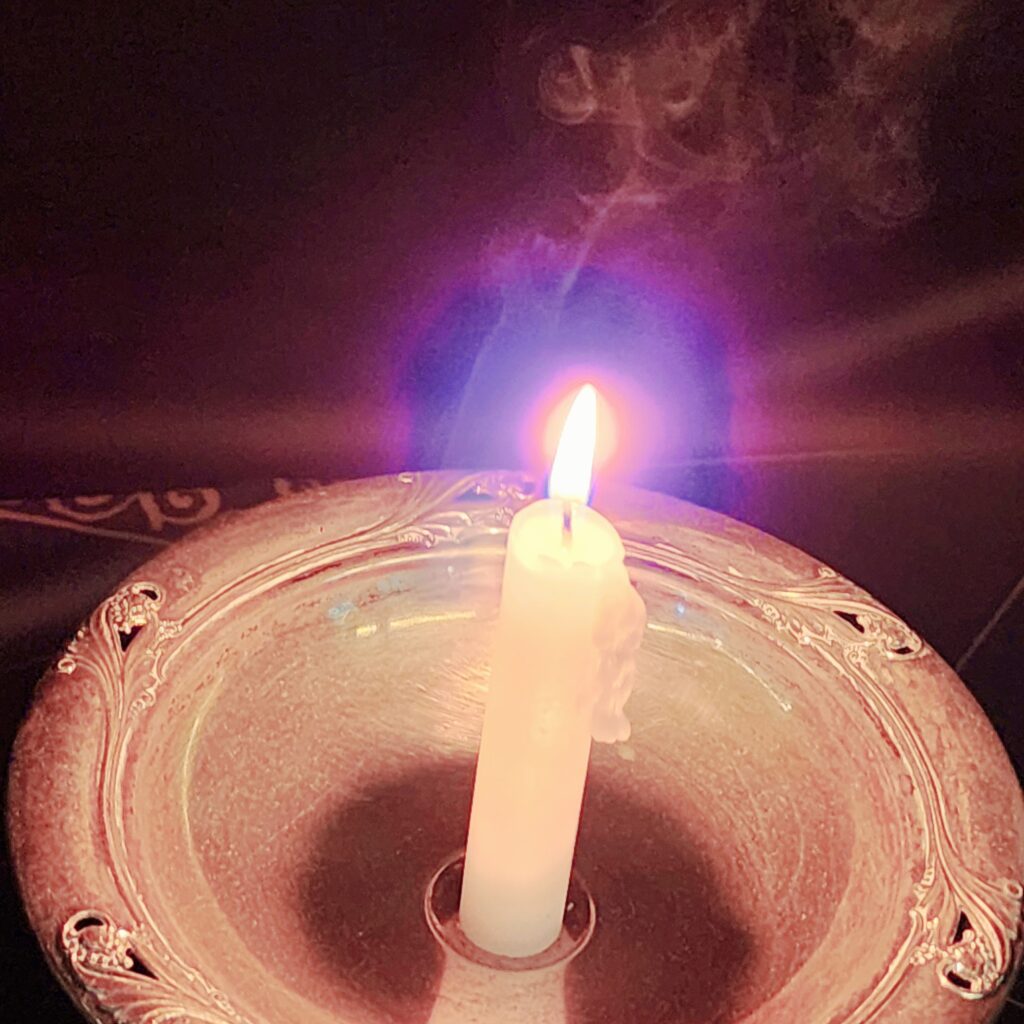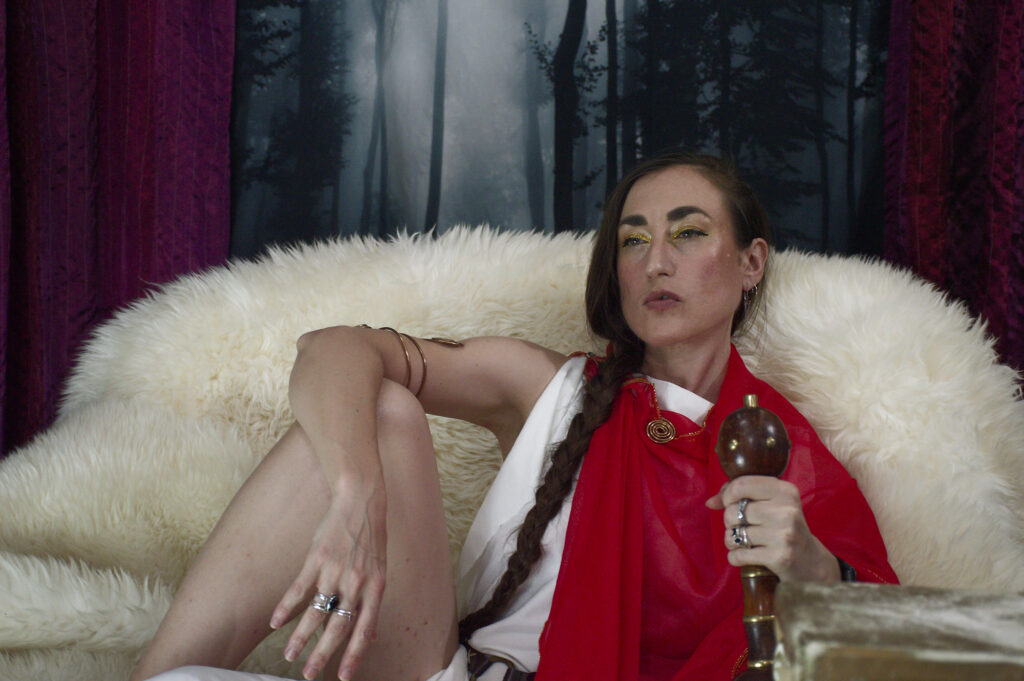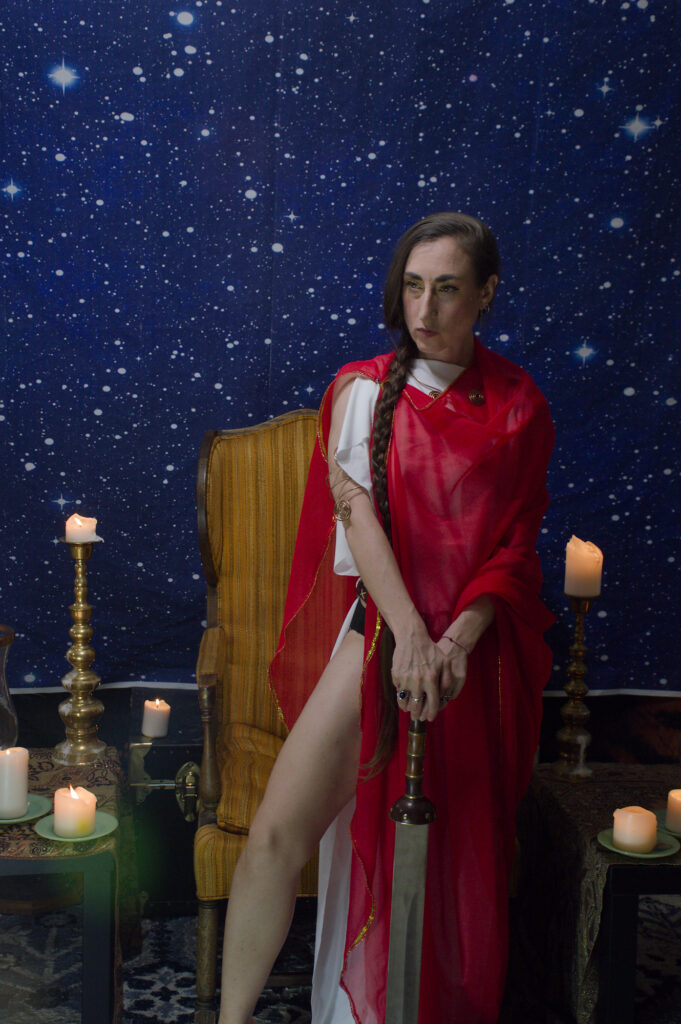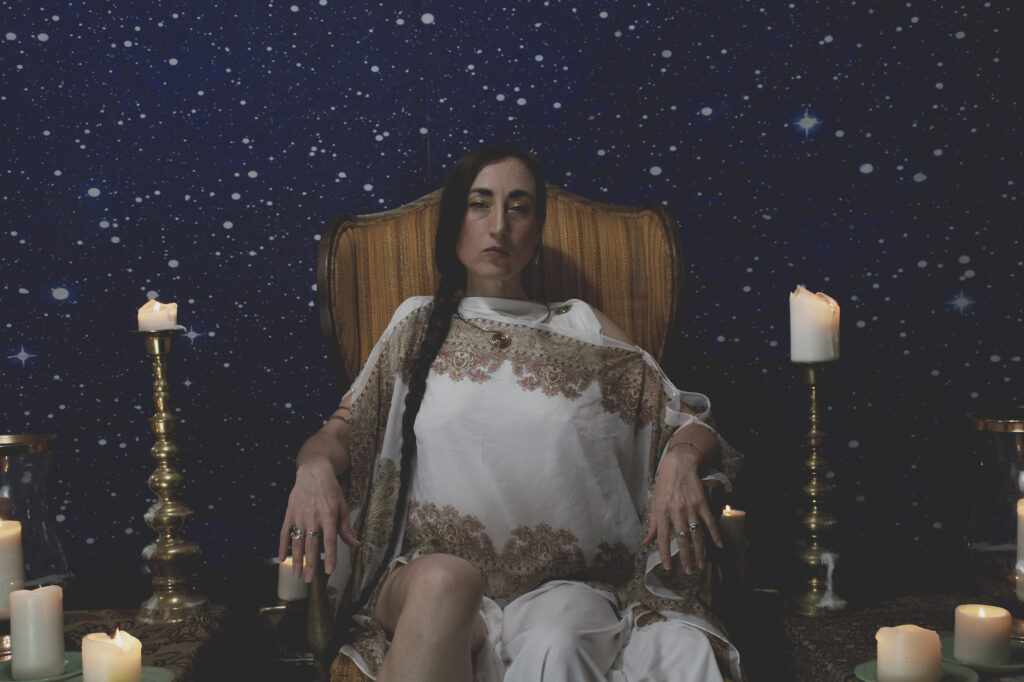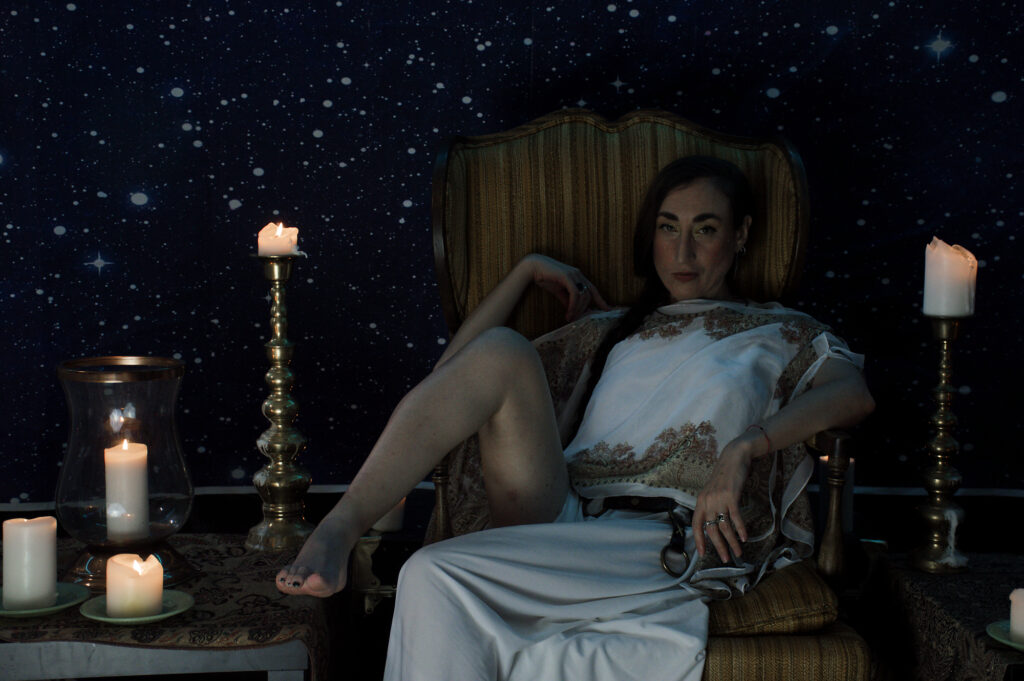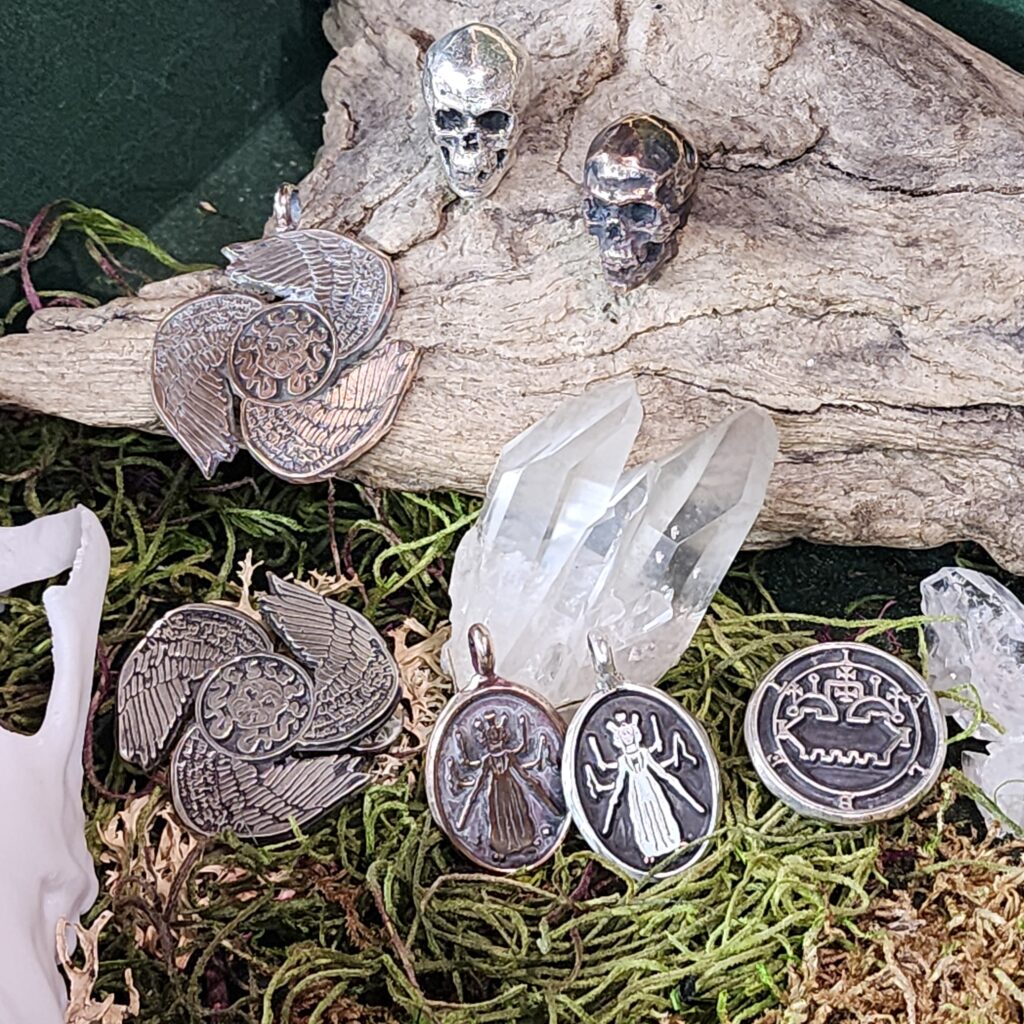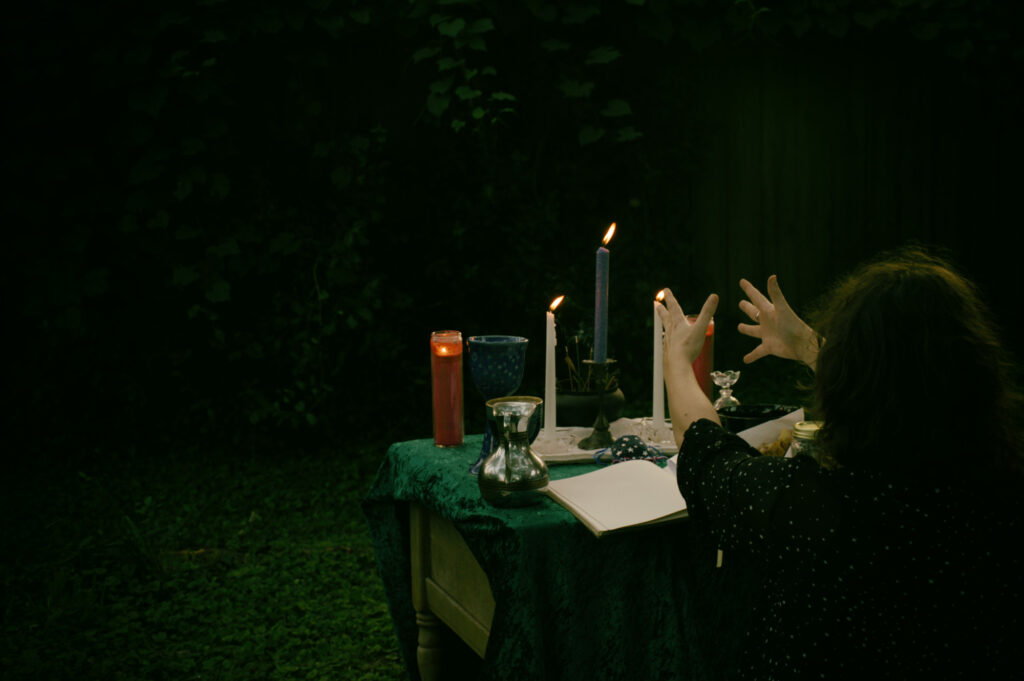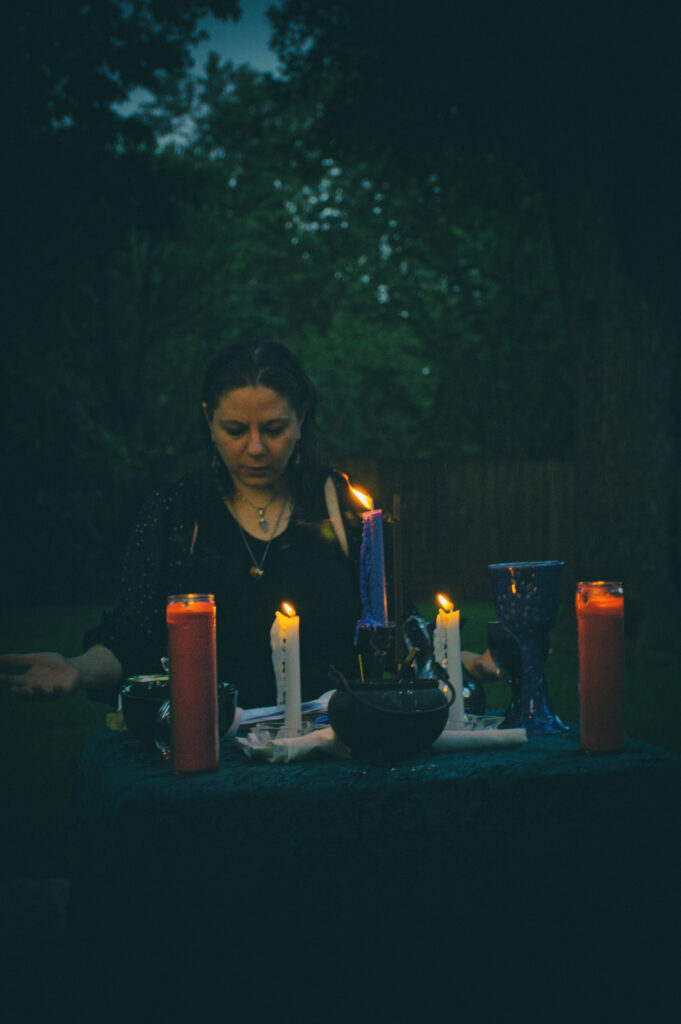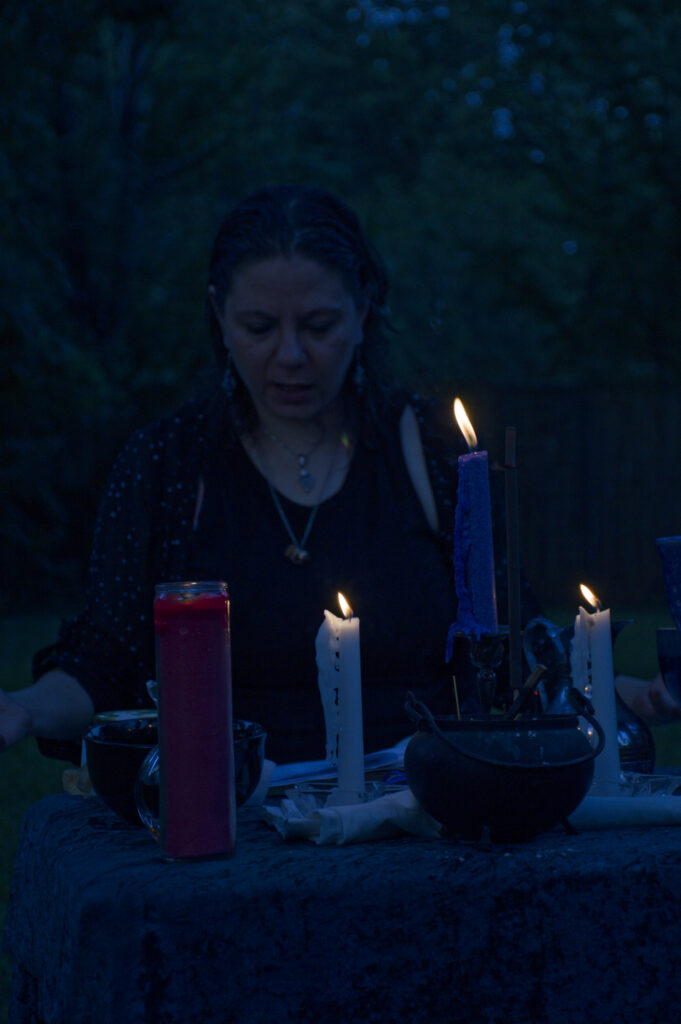
[This is the fourth post in a series. Click here for the first.]
Those of you taking Sara Mastros’ pentacles course may have noticed that my last post did not actually make it to the end of lesson three. I had not, yet, put to use any of the pentacles I had inscribed in by book. Those experiences were weird and interesting enough to deserve a post of their own.
Jupiter Pentacles
My very first pentacles, as it turned out, were made outside the framework of this class. Over the summer, Mastros offered a workshop on using the Hexagram of Ab Ehyeh (second pentacle of Jupiter) for financial gain. I had inscribed but not yet deployed my first Lunar talismans, and decided not to jump ahead to teach my book the Jovial talisman before the class, so I printed the pentacle to inscribe over… which was where I made my first mistake.
I printed the pentacle on the wrong paper. Rather than just roll with it, I reprinted it on the cardstock I had wanted to use … and then I got all up in my head about proper care and disposal about the Hebrew god-names, and decided to punt the problem by consecrating both of them, each to a different professional goal: a particular sales goal, difficult but achievable; and a particular number of Patreon supporters. Both by the end of November.
They didn’t work.
Sales through the end of the summer and were good, but not what I was hoping for in October, and straight tanked in November. I have been delighted to welcome several new patrons, but did not meet my goal. (Writing that sentence, knowing y’all will read it, feels a little weird. Sorry about that.)
It’s possible that they did help. That these two pentacles, along with my other prosperity and financial magic, are what pulled me up out of the pit that was the first half of this year’s sales. But even if so, that’s not a resounding success.
But I didn’t know how those first pentacles would turn out, yet, when I finally sat down to put my first book-pentacles to use.
Preparing and Planning
Sara Mastros strongly suggests The Lunar Lock and Key (the first Lunar pentacle, per Mathers) as a student’s first pentacle, specifically to use it to journey to the underworld. Up to this point, I really had planned to stick as close to the lesson plan as I could. But I couldn’t figure out what would be the … best, most useful, most interesting way for me to employ the pentacle, an unfamiliar magical technology, to go to the underworld, something I am well accustomed to doing on my own.
It’s … a stupid thing to get caught up on. But get caught I did. I stewed on that problem for probably a whole month. Finally, the solution came to me: I would ask the Third Pentacle of the Moon, The Witch’s Teacher.
The Witch’s Teacher
The Witch’s Teacher (the third Lunar pentacle per Mathers) is a more conventional pentacle than the Lunar Lock and Key: round, with clear internal geometry, if with a slightly more obscure versicle. Inscribing it in my Book, as I described previously, went smoothly. Employing it was even more straightforward: I invoked Solomon and wound up the Book according to Mastros’ techniques. I told various powers – Solomon, the Book, the Great Seal, and the pentacle, itself – what I wanted, invoking each in turn, explaining my situation . I asked to be instructed in a vision in circle, in a dream tonight, and/or in visions and revelations later. Anointed a candle with holy oil, then lit it.
I was hit immediately with clairsentient knowledge: the Lunar Lock and key will serve as a guide, showing me where and how to go; it will lead me beyond the brass gates that I have seen in previous visionary trances; it will serve as a passport and a badge of authority; that using the Lunar Lock and Key to journey to the underworld is, itself, a rite of passage.
I thanked the spirits, wound down the book, and began planning my next adventure.
The Lunar Lock and Key
I put the Lunar Lock and Key to use around the middle of October.
Despite – or, more accurately, because of – my familiarity with less structured underworld journeys, I was careful to maintain the ritual and protocols I have developed in my pentacles work so far. I bathed and changed into my ritual whites before the start of the planetary hour. I sat down to meditate with my Book before winding up the ritual proper.
I struggled to stay focused, at first. I did not feel as strong a connection to Solomon as usual during initial invocation. I still didn’t get name or presence from Great Seal, but it definitely opened up and powered up. I didn’t get a strong sense of resonance while invoking the pentacle (further evidence for my theory that I am somehow not tuning in to the right frequency to properly perceive the pentacles), but visualizing using the angel names as the key and “tickling” the lock open (Mastros’ word; those of you who’ve tried your hands at lockpicks might find that metaphor more relatable) did produce a gate through which I was able to move.
I descended through the void, bypassing all my usual routes and landmarks, until I came to a great wall winding through a red desert, and a brazen gate which looked a lot like those that I’ve seen in previous visionary experiences. A glowing blue figure that answered to the name Shioel was waiting for me and led me to a postern gate where we met the spirit of my Book.
Inside the gate was, briefly, a vision of fiery red desert that gave way to a vision of poppy fields and a yellow brick road leading to the Emerald City. Yes, that Emerald City. Sort of. I flew there with Shioel a the spirit of my Book, and we entered the city by a side gate.
Inside the Emerald City was initially a void. Then there was a vision of a throne, which Shioel said was what I expected to see. The vision of the throne exploaded into a vision of light, followed by a series of visions more weird and personal than I care to share at this stage of internet culture enshittification.
At the end of my visionary journey, Shioel told me to return at the dark of the moon and I returned to my body.
The next dark moon turned out to be Samhain. Winding up for and then having to cancel our usual Samhain campout was exhausting and demoralizing, and I almost spent the night stoned in front of the TV. Somehow, though, I rallied enough to sit down in front of my altar to light some offerings and at least meditate for a while, and commune with my familiar spirits. Those few minutes of meditation quickly escalated into an unplanned visionary experience.
Solomon appeared to me, and the spirit of my Book. They admonished me not to use my Solomonic materia for anything but the Solomonic work (I had lit some of the incense as “the best I’ve got” right then), and then cajoled me to conjure up the Lunar Lock and Key and make my planned descent to the underworld.
In the end, I gave in. I called up the pentacle in my mind, invoked the names as best as I could remember them, and opened the portal. With the Book closed on the altar, instead of open before me, it is perhaps unsurprising that this second journey was more like my other underworld journeys than the first descent with the Lunar Lock and Key had been.
I descended first into light and the void, then ascended to the sphere of the Moon, where the spirit of my Book underwent a Lunar initiation much like those that I have been through in my Seven Spheres workings. Then we descended, again, and returned to the Emerald City for another round of visionary experiences weirder than I am prepared to share publicly, including some that were so weird I couldn’t even find words to record them in my most private journal.
Preparing for the Next Stage
For a wide variety of reasons, I’ve fallen off the work since November. I could point to the US presidential election, or to my father’s illness and death, or to my annual Christmas Depression, or any number of things, and that would all be true … but they are more true about why this write-up too me so long. What really broke my ritual streak was the Fall Back shift from Daylight Savings to Standard time: the Third Hour of Night now coincides with my dinner time, making it incredibly difficult for me to fit planetary timing into my regular life, even as a full time artist and magician. This fallow period, though, is by no means an end of my work in Mastros’ course and with the Solomonic pentacles.
I have already learned so much. About the grimoire tradition. About the legendary King Solomon. About the Hebrew language. About making magic books (this is my … third? Fourth?). About bringing my lifetime of witchcraft to ceremonial magic, and incorporating ceremonial paradigms into my witchcraft. I’ve had insights about how to improve my Picatrix talismans. I suspect that I will learn things that will lead me to make pentacle-like talismans using channeled imagery and versicles from extra-Biblical texts (specifically but not exclusively Homeric and Orphic texts).
Having now deviated from my post-per-lesson format, I think it’s fair to warn you that I’ll be deviating further. I am not going to hand-hold you through the whole of Sara Mastros’ pentacles course. That would be rude to her and boring for me and not actually that helpful or interesting to you.
Instead, going forward, I’ll be sharing my most interesting results from my classwork, and from the experiments that classwork inspires.
So I’m going to end this post again recommending that you buy Sara Mastros’ book, The Sorcery of Solomon: A Guide to the 44 Planetary Pentacles of the Magician King, and that you take her class if you can. (Her main site is down for maintenance at the time of this writing, so that second link might be dead by the time you read this. If so, let me know?)

